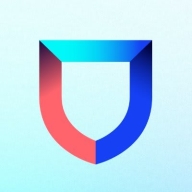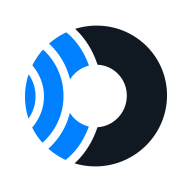


Lacework FortiCNAPP and Orca Security are two prominent players in the cloud security market. Lacework FortiCNAPP tends to have the upper hand with its strong machine learning capabilities and simplified setup process, while Orca Security distinguishes itself with its unique agentless deployment.
Features: Lacework FortiCNAPP offers significant features like anomaly detection, compliance reporting across multiple standards, and integration with machine learning systems. Its automation reduces the workload on security teams. Orca Security, on the other hand, champions its SideScanning technology for deep visibility, offers robust vulnerability ranking, and comprehensive dashboards without relying on agent setup. Furthermore, it provides seamless integration across multiple cloud environments, enhancing its deployment efficiency.
Room for Improvement: Lacework FortiCNAPP could benefit from improved data governance, better alert configuration, and refined threat-hunting capabilities. Enhancements in compliance metrics and third-party tool integration would add value. Orca Security needs to strengthen support for on-prem solutions, introduce more automatic remediation options, and improve user education on new features, despite its effective agentless model.
Ease of Deployment and Customer Service: Lacework FortiCNAPP is noted for its responsive customer service through multiple channels, ensuring a smooth deployment process. Orca Security simplifies cloud integration with its largely agentless approach and proactive user engagement, though communication improvements in technical support are suggested.
Pricing and ROI: Lacework FortiCNAPP's pricing can be expensive for large deployments, yet it demonstrates solid ROI through reduced monitoring efforts. Orca Security's comprehensive feature set justifies its cost for users through improved visibility and security coverage, although it may seem costly for smaller deployments.



SentinelOne Singularity Cloud Security protects cloud workloads, offering advanced threat detection and automated response. It integrates seamlessly with cloud environments and secures containerized applications and virtual machines against vulnerabilities.
SentinelOne Singularity Cloud Security is renowned for its efficiency in mitigating threats in real-time. The platform integrates effortlessly with existing cloud environments, ensuring robust cloud security management with minimal manual intervention. Securing containerized applications and virtual machines, it excels in threat intelligence and endpoint protection. However, improvements are needed in performance during high workload periods, and more integrations with third-party tools and better documentation would be beneficial. Users often find the installation process complex, support response times slow, and the dashboard's navigation unintuitive.
What are the key features of SentinelOne Singularity Cloud Security?In specific industries, SentinelOne Singularity Cloud Security is implemented to safeguard critical data and infrastructure. Organizations in finance, healthcare, and technology depend on its real-time threat detection and automated response to protect sensitive information. Its ability to secure containerized applications and virtual machines is particularly valuable in dynamic environments where rapid scaling is necessary.
Lacework FortiCNAPP provides robust cloud security, combining vulnerability management and multi-cloud insight with user-friendly controls, machine learning detection, and compliance support.
Lacework FortiCNAPP specializes in cloud security by merging machine learning anomaly detection with agent-based vulnerability management to offer detailed alerts and compliance reports. Its comprehensive approach allows continuous monitoring across AWS and Kubernetes, providing insights from an attacker's perspective. The platform offers automation and seamless Slack integration, facilitating collaborative and efficient cloud security management. Users value its ability to handle multi-cloud environments and scan IAC scripts, configurations, and compute nodes across AWS and GCP.
What are the key features?Organizations across sectors leverage Lacework FortiCNAPP for cloud security, focusing on compliance, security posture, and vulnerability management. It is widely used for monitoring AWS and Kubernetes environments, scanning IAC scripts, configurations, and securing compute nodes. It supports multi-cloud security posture management and log ingestion, enabling companies to maintain strong cloud infrastructures without dedicated security layers.
At Orca Security, we’re on a mission to make it fast, easy, and cost effective for organizations to address critical cloud security issues so they can operate in the cloud with confidence.
Key Platform Features:
Agentless: Complete, centralized coverage of the entire cloud estate, without the need for installing and configuring agents or layering together multiple siloed tools. Full visibility of cloud misconfigurations, vulnerabilities, workload protection, malware scanning, image scanning, file integrity monitoring and more.
Asset Inventory: Get a complete inventory of all your public cloud assets, including detailed information on installed OSes, software, and applications, as well as data and network assets such as storage buckets, Virtual Private Clouds (VPCs), and Security Groups.
Attack Path Analysis: Visualize attack vectors to critical assets or crown jewels. See which assets are susceptible to lateral movement, assume roles, privilege escalation, and more.
Risk Prioritization: Prioritize the 1% of risks that matter the most, based on impact scores. Secure the vulnerabilities and misconfigured targets (critical assets) and eliminate the potential risks residing on the attack paths to those targets.
Cloud Threat Detection: Monitor for malicious activity within your entire cloud estate. Be aware of detected threats, user behavior anomalies and more.
Breach Forensics: Log every change and all activity into a central repository for investigation procedures to confirm or deny entry and compromises within the cloud estate.
Cloud To Dev (Shift Left): Orca’s built-in shift left capabilities enables DevOps to focus more security attention earlier in the CI/CD pipelines. Security teams are able to trace a production risk (misconfiguration or vulnerability) directly to the original source code repository from which it came, even down to the exact line of code that is at the root of the identified risk.
Compliance: Choose from over 60 preconfigured compliance frameworks, cloud security best practices, CIS Benchmarks, or design and build your own compliance framework for fast and continuous reporting.
Security Score: The Orca Security Score is found on Orca’s Risk Dashboard and is updated daily. The overall score is calculated based on performance in the following five categories - Suspicious Activity, IAM, Data at Risk, Vulnerable Assets, and Responsiveness. Since the scores are percentage based and not raw numbers, you can objectively make comparisons to other organizations within your industry or business units of different sizes. In addition to reporting to senior management, the Orca Security Score can help with internal self-monitoring, as a way of measuring risk mitigation efforts, to know where to focus efforts, and track progress.
Orca Security Benefits
Consolidate technologies to reduce costs and complexity:
“The more I can get out of this one solution, the better. I see Orca as the tool where we get all cloud-related security data.” - Joshua Scott, Head of Security and IT | Postman
Avoid costly breaches:
"I look at proactive asset discovery, configuration management, and vulnerability management as being able to find a vulnerability before the bad guys do and being able to deal with it before something exploits it. This is what Orca does for us." - Doug Graham, CSO & CPO | Lionbridge
Increase team productivity and efficiency by focusing on high-value activities and solving the 1% of risks that matter most:
"Orca is unique in that it locates vulnerabilities with precision and delivers tangible, actionable results – without having to sift through all the noise." - Aaron Brown, Senior Cloud Security Engineer | Sisense
Quick Time-to-Value with Immediate ROI:
"Orca told us we could have some visibility within 5 or 10 minutes, and I thought, ‘There’s no way.’ Well, I was wrong. They really did it." - Thomas Hill, CISO | Live Oak Bank
Reduce MTTR and remove operational friction:
“We can’t ask developers things like ‘Did you think about security? When you start a new VM on AWS, can you please let me know so I’m able to scan it? Can you please deploy an agent on that machine for me?’ We need a better way to work. Orca provides that better way by eliminating organizational friction.” - Erwin Geirnaert, Cloud Security Architect | NG Data
We monitor all Cloud Security Posture Management (CSPM) reviews to prevent fraudulent reviews and keep review quality high. We do not post reviews by company employees or direct competitors. We validate each review for authenticity via cross-reference with LinkedIn, and personal follow-up with the reviewer when necessary.